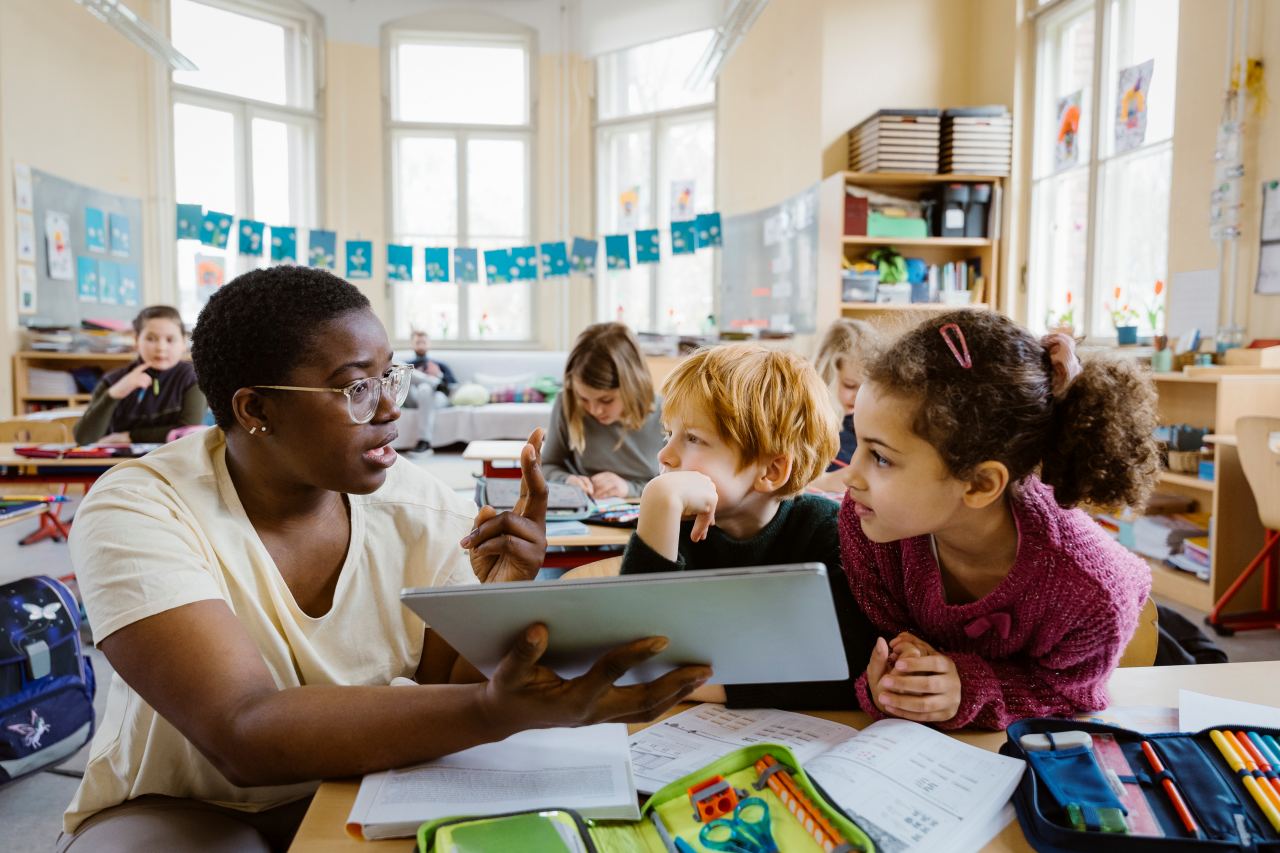Effective Primary Science Tuition Singapore for Better Exam Results
Effective Primary Science Tuition Singapore for Better Exam Results
Blog Article
A Comprehensive Guide to the Numerous Understanding Methods in Main Science Direction
The exploration of varied understanding approaches in main science direction presents an opportunity for educators to enhance student involvement and understanding dramatically. By taking a look at hands-on understanding strategies, inquiry-based techniques, and joint approaches, we can identify reliable practices that deal with different finding out styles. Additionally, the integration of modern technology and separated instruction plays a crucial duty in fostering an inclusive atmosphere. The question continues to be: how can these approaches be efficiently implemented in the classroom to maximize their influence? The solution exists in a better assessment of each method and its implications for training science.

Hands-On Knowing Techniques
Hands-on discovering strategies play a crucial function in main scientific research guideline, engaging pupils in energetic expedition and experimentation. These approaches permit students to communicate directly with sensations and products, promoting a deeper understanding of scientific ideas. By utilizing manipulatives, designs, and real-life experiments, teachers produce an atmosphere where pupils can observe, hypothesize, and check their ideas.
Such techniques not only boost understanding but additionally cultivate vital reasoning and analytic abilities. When trainees join activities like developing straightforward makers, growing seeds, or conducting chemical responses, they are motivated to ask concerns and seek responses through their very own monitorings. This experiential technique assists to debunk complicated clinical concepts, making them a lot more obtainable and relatable.
Moreover, hands-on discovering promotes partnership among peers, as pupils often function in groups to perform experiments or share findings. This synergy not just improves their understanding experience yet likewise creates important social abilities. Ultimately, incorporating hands-on techniques in key science instruction cultivates a long-lasting love of discovering and interest concerning the natural world, laying a strong foundation for future academic quests in science and past.
Inquiry-Based Discovering
Inquiry-based learning is an instructional approach that encourages pupils to ask concerns, explore sensations, and construct their very own understanding of scientific concepts. This method moves the emphasis from typical teacher-led guideline to a much more student-centered experience, where students take the effort in their educational journey. By promoting interest, inquiry-based learning promotes much deeper interaction with the product, permitting students to check out subjects in a meaningful context.
In technique, this method commonly includes hands-on experiments, observations, and important reasoning activities that straighten carefully with the clinical method. Students are urged to develop hypotheses, layout investigations, and analyze data, which cultivates essential abilities such as analytic and analytical thinking. The function of the educator in this framework is to assist in expedition, leading pupils via the inquiry procedure while motivating independent thought and partnership.
Additionally, inquiry-based learning nurtures a sense of ownership over the discovering procedure, inspiring students to seek understanding actively. This approach not only boosts understanding of clinical concepts but likewise fosters a lifelong love for knowing, furnishing trainees with the skills necessary to navigate a progressively complex world.
Collaborative Discovering Approaches
Collective knowing techniques equip students to take part in meaningful interactions with peers, fostering a common obligation for their academic outcomes. In main scientific research instruction, these approaches Visit Your URL urge students to collaborate to explore scientific ideas, solve problems, and conduct experiments (primary science tuition Singapore). By joining team activities, trainees can leverage diverse point of views, permitting richer understanding and retention of clinical knowledge
One secret aspect of collective discovering is the focus on communication abilities. Students need to express their ideas, pay attention actively to others, and negotiate concepts, all of which are important competencies in both academic and real-world contexts. This social interaction not just improves their understanding of scientific concepts however also advertises synergy and conflict resolution abilities.
When trainees see the worth of their payments within a team, they are much more likely to take ownership of their discovering journey. Generally, incorporating collective knowing techniques in key scientific research instruction cultivates a vibrant knowing setting that prepares pupils for future scholastic and social challenges.
Modern Technology Combination in Scientific Research
The combination of modern technology in key scientific research instruction enhances finding out experiences by providing innovative devices see this website and sources that support numerous training methods, consisting of joint knowing - primary science tuition Singapore. Making use of digital systems, simulations, and interactive applications allows students to engage deeply with clinical ideas, facilitating a much more hands-on method to knowing
Virtual research laboratories, as an example, allow students to carry out experiments securely and effectively, promoting inquiry-based understanding. These tools can simulate real-world clinical scenarios, permitting trainees to picture intricate procedures that would be challenging to reproduce in a traditional classroom setting. Moreover, technology fosters interaction and partnership amongst students, as they can share searchings for and collaborate on projects via on the internet systems.
Furthermore, multimedia presentations and academic videos can enrich lessons by providing to diverse understanding designs, making abstract ideas more accessible. Data evaluation tools likewise equip pupils to gather and translate clinical information, enhancing essential assuming abilities. Generally, the tactical unification of modern technology in key science instruction not only enhances involvement yet likewise prepares pupils for a highly innovative society, equipping them with essential abilities for future scientific endeavors.
Differentiated Direction Strategies
Separated instruction techniques are crucial for resolving the diverse requirements of learners in main science education and learning. These strategies allow teachers to customize their teaching approaches to suit differing capabilities, rate of interests, and finding out designs within the classroom. By using distinguished guideline, educators can create a comprehensive setting that cultivates engagement and improves understanding of clinical principles.
One reliable technique is to make use of adaptable organizing, which enables pupils to team up with peers at comparable ability degrees or with varying perspectives. This approach urges peer knowing and advertises vital thinking. Furthermore, providing selections in jobs can encourage trainees, allowing them to pick tasks that resonate with their passions while still satisfying curricular goals.
Additionally, integrating tiered assignments is one more useful technique. Deliberately jobs with differing levels of complexity, educators can ensure that all trainees are appropriately tested, no matter their proficiency. Using formative assessments to assess recognizing more enables teachers to article source change their instructional approaches dynamically, making sure that each student obtains the assistance they require.
Eventually, carrying out separated direction techniques in key scientific research education not just improves trainee knowing end results however also cultivates an enthusiasm for science, preparing students for future scholastic quests.

Verdict
In recap, reliable primary science instruction requires a complex technique that includes hands-on discovering, inquiry-based techniques, and collaborative strategies. The assimilation of innovation and distinguished direction additionally provides to diverse learning styles, fostering an environment helpful to exploration and important thinking.
The expedition of varied learning techniques in key science instruction presents an opportunity for teachers to improve trainee involvement and understanding dramatically.Hands-on learning techniques play an essential function in main science direction, involving students in active expedition and trial and error.Inquiry-based knowing is a training method that urges pupils to ask concerns, check out phenomena, and build their very own understanding of clinical concepts.Joint knowing techniques empower trainees to engage in purposeful interactions with peers, cultivating a common obligation for their instructional outcomes. In general, integrating collective understanding techniques in main scientific research direction grows a vibrant understanding setting that prepares pupils for future scholastic and social obstacles.
Report this page